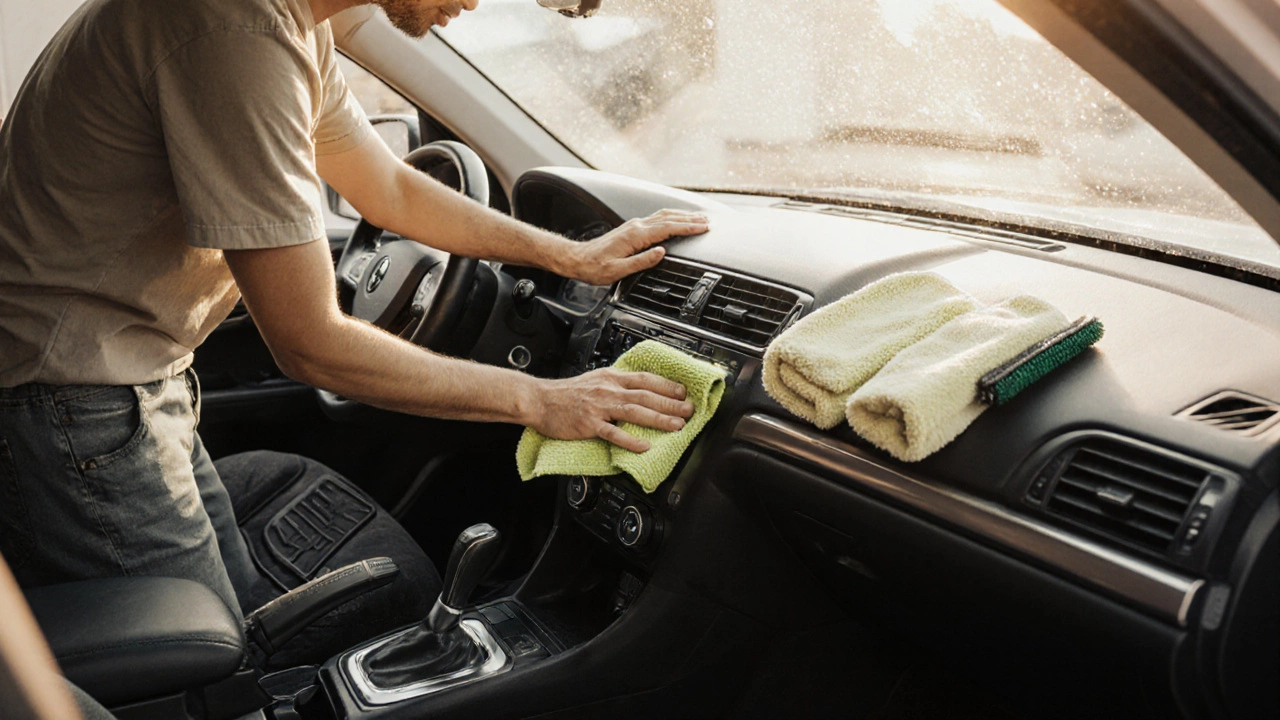When you think of home car detailing, the process of thoroughly cleaning, restoring, and protecting your vehicle’s surfaces using DIY methods and consumer-grade tools. Also known as DIY car care, it’s not just washing your car—it’s about bringing out the best in every surface, inside and out. Most people skip this step and just rinse off dirt. But real detailing tackles dust in the vents, faded dashboards, sticky cupholders, and swirl marks on paint you didn’t even know were there.
Car detailing kits, pre-packaged sets of cleaners, microfiber towels, brushes, and protectants designed for home use are popular because they make it easy to start. But not all kits are equal. Some include cheap chemicals that leave residue. Others skip the right tools—like a clay bar for paint contamination or a dual-action polisher for swirl removal. The best home detailers know it’s not about buying the most expensive stuff, but using the right product for the right job. For example, interior cleaning, the process of removing dirt, oils, and odors from car seats, dashboards, and carpets needs different cleaners than exterior paint. What works on leather might ruin vinyl. What cleans glass might streak on plastic.
And it’s not just about looks. Proper car interior styling, enhancing the appearance and feel of a vehicle’s cabin through cleaning, protection, and personalization helps preserve value. A well-maintained interior can add thousands to resale price. A cracked, stained dashboard? That’s a deal-breaker for buyers. That’s why pros don’t just wipe surfaces—they condition leather, seal plastics, and use UV blockers to prevent fading. Even something as simple as cleaning your air vents with a soft brush makes a difference. You’d be surprised how much grime builds up in places you never look.
Then there’s the tools. You don’t need a $500 setup to get great results. But you do need a few essentials: at least two microfiber towels (one for drying, one for polishing), a good foam applicator pad, and a vacuum with crevice tools. Many people skip the vacuum and just shake out the floor mats. That’s like wiping your kitchen counter with a damp cloth after spilling spaghetti. It looks clean—but you’re missing the grit stuck in the corners.
And don’t forget the environment. Detailing outside on a sunny day might seem smart, but it causes water spots. Doing it in the shade, or even indoors with good ventilation, gives you more control. Same with products—some spray cleaners contain harsh solvents that damage trim over time. You don’t need to buy 15 different bottles. Start with one all-purpose cleaner, one glass cleaner, one leather conditioner, and one wax or sealant. Master those first.
What you’ll find below are real, tested methods from people who’ve done this hundreds of times. No fluff. No marketing hype. Just what actually works: how to remove stubborn stains, how to tell if your tint is cured enough to wash, why Armor All isn’t always the best choice, and what pros use inside your car that you can steal for your garage. Whether you’re cleaning a daily driver or prepping a weekend project car, these posts give you the exact steps to get results that look like a professional did it—without the shop price.

Learn how to detail your car interior like a pro at home with simple tools and proven techniques. No expensive gear needed-just the right steps to clean, deodorize, and protect every surface.